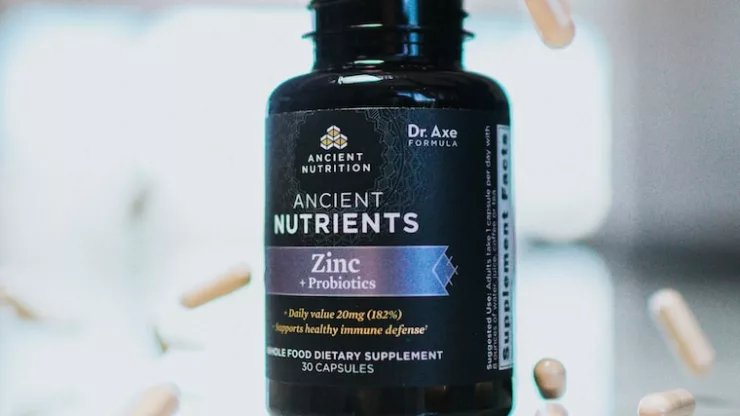Histamine is a chemical that plays several roles in the body, including sending messages to the brain, signaling the release of stomach acid for digestion, and being released as part of the immune system’s response to an injury or allergic reaction.
However, when the body cannot break down enough of it in the intestines, histamine levels in the blood can rise, leading to a condition known as histamine intolerance.
This condition is relatively rare, affecting about 1–3% of the global population, but it can cause a range of symptoms, most commonly gastrointestinal ones such as bloating, diarrhea, and abdominal pain.
Histamine intolerance typically results from having low levels of an enzyme called diamine oxidase (DAO), which is the primary agent that breaks down digested histamine.
Many foods and drinks contain histamine, and usually, DAO and, to a lesser extent, an enzyme called histamine-N-methyltransferase (HNMT) break down ingested histamine.
However, several factors can interfere with how DAO and HNMT work, leading to an increase in histamine levels in the body.
Jump to Section
High Histamine Foods
Almost all foods and drinks contain some histamine, and the amount usually increases as the food ages, spoils, or ferments. Some foods and drinks also contain compounds that help release histamine in the body or block the production or effectiveness of the enzymes DAO and HNMT.
Foods and drinks that are rich in histamine:
- Alcohol
- Aged cheeses
- Canned, pickled, and fermented foods, such as sauerkraut
- Smoked products, such as sausage, ham, bacon, or salami
- Spinach
- Eggplant
- Ketchup
- Vinegar
- Canned fish, such as mackerel and tuna
Foods that have been reported to release histamine (histamine releasers):
- Most citrus fruits – lemon, lime, oranges
- Cocoa and chocolate
- Walnuts, peanuts
- Papaya, pineapples, plums, kiwi, and bananas
- Legumes
- Tomatoes
- Wheat germ
- Most vinegars
- Additives – benzoate, sulphites, nitrites, glutamate, food dyes
Foods that have been reported to block the diamine oxidase (DAO) enzyme:
- Alcohol
- Black tea
- Energy drinks
- Mate tea
In addition, some foods may trigger the release of histamine, including most citrus fruits, cocoa and chocolate, tomatoes, egg whites, fish, and peanuts. Certain drinks, such as alcohol, energy drinks, green tea, black tea, and maté tea, may interfere with DAO and HNMT levels or actions.
Managing Histamine Intolerance
If a person is suspected to have histamine intolerance, a doctor may recommend a low histamine diet.
This usually means limiting the intake of histamine-rich foods rather than excluding them entirely.
Foods low in histamine include fresh meats, fresh fish, milk substitutes, cooked egg yolks, most fresh vegetables (except tomatoes and eggplants), and most fresh fruits (except citrus fruits, strawberries, and cherries).
Aside from dietary changes, there is no set treatment for people with histamine intolerance. However, one or more of the following approaches may help: taking antihistamines, taking DAO enzyme supplements, avoiding medicines associated with histamine intolerance, and taking corticosteroids.
In conclusion, managing a histamine intolerance tends to involve making dietary changes, taking antihistamines or enzyme supplements, and avoiding or limiting the use of medications that trigger the release of histamine. A diet focused on fresh, minimally processed foods with few preserved or fermented products naturally contains less histamine.
Further Understanding Histamine Intolerance
Histamine intolerance is a condition where the body cannot process high levels of histamine, a chemical that plays a role in immune response, brain communication, and digestion.
When histamine levels rise too high, individuals with histamine intolerance experience allergy-like symptoms without having an allergic reaction.
It’s also possible for someone to have allergies and histamine intolerance concurrently.
Symptoms of Histamine Intolerance
The most common symptoms of histamine intolerance include:
- Migraine headaches
- Digestive symptoms, such as diarrhea
- Flushed skin
- Hives or an itchy skin rash
- Worsening eczema, or a condition that causes itchy and flaky rashes
- Congested, runny, or itchy nose
- Red, itchy, or watery eyes
The severity of symptoms can vary from person to person. Elevated levels of histamine can also cause the heart to beat erratically and may be associated with serious chronic conditions like Crohn’s disease.
Causes of Histamine Intolerance
Histamine intolerance is often caused by a deficiency in the enzymes diamine oxidase (DAO) and histamine-N-methyltransferase (HNMT), which are responsible for processing histamine in the body.
Without enough of these enzymes, histamine can build up and cause symptoms that mimic allergies.
Some people have genetic mutations that decrease the amount or function of DAO. There’s some evidence that inflammatory bowel disease and gluten sensitivity can also affect DAO levels.
Diagnosis and Treatment of Histamine Intolerance
Diagnosing histamine intolerance can be challenging due to the fluctuating levels of histamine in the body. However, a review of symptom history, tests to rule out other conditions, DAO testing, and a histamine challenge test can help form a diagnosis.
The best way to naturally treat histamine intolerance is to avoid histamine-rich foods or foods that trigger your body to release histamine. A histamine-free diet may be enough to make your symptoms go away.
In addition to a modified diet, healthcare providers may recommend using certain types of supplements, such as a DAO supplement, to help naturally reduce or eliminate symptoms.
Antihistamine medicines may also be useful if you accidentally eat a food that contains histamine.
In conclusion, histamine intolerance is a complex condition that requires careful management. If you suspect you have histamine intolerance, it is important to consult with a healthcare provider for a proper diagnosis and treatment plan.
Sources:
https://www.verywellhealth.com/histamine-intolerance-1324016
https://www.medicalnewstoday.com/articles/322543
https://www.histamineintolerance.org.uk/about/the-food-diary/the-food-list/

With a deep passion for personal development, Ben has dedicated his career to inspiring and guiding others on their journey towards self-improvement.
His love for learning and sharing knowledge about personal growth strategies, mindfulness, and goal-setting principles has led him to create My Virtual Life Coach.
Contact Ben at [email protected] for assistance.




